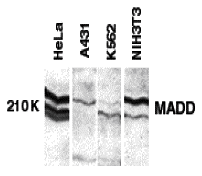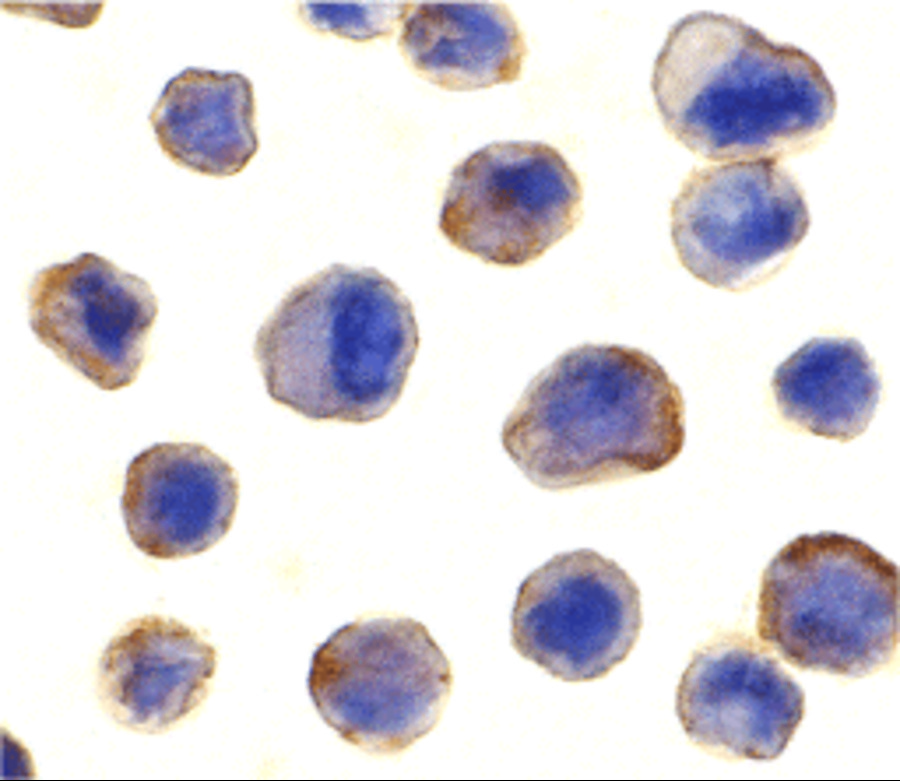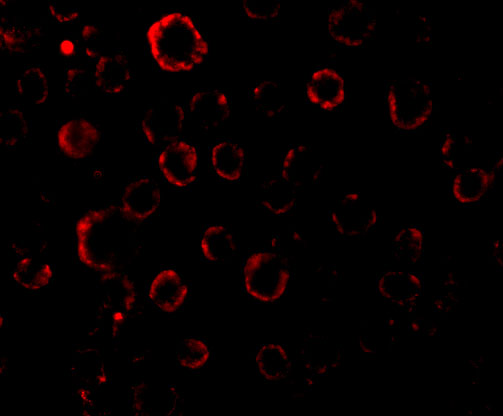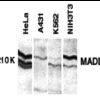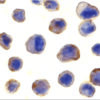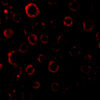Anti-MADD Antibody (1150)
$445.00
SKU: 1150
Categories: Antibody Products, Apoptosis Antibodies, Products
Overview
Product Name Anti-MADD Antibody (1150)
Description Anti-MADD (CT) Rabbit Polyclonal Antibody
Target MADD
Species Reactivity Human, Mouse
Applications ELISA,WB,ICC,IF
Host Rabbit
Clonality Polyclonal
Isotype IgG
Immunogen Peptide corresponding to aa 1570-1588 of human MADD. This peptide sequence is identical to that of DENN and differs by one amino acid with rat GDP/GTP exchange protein RAB3-GEP.
Properties
Form Liquid
Concentration Lot Specific
Formulation PBS, pH 7.4.
Buffer Formulation Phosphate Buffered Saline
Buffer pH pH 7.4
Format Purified
Purification Purified by peptide immuno-affinity chromatography
Specificity Information
Specificity This antibody recognizes human and mouse MADD (200-220 kD).
Target Name MAP kinase-activating death domain protein
Target ID MADD
Uniprot ID Q8WXG6
Alternative Names Differentially expressed in normal and neoplastic cells, Insulinoma glucagonoma clone 20, Rab3 GDP/GTP exchange factor, RabGEF, Rab3 GDP/GTP exchange protein, Rab3GEP
Gene Name MADD
Gene ID 8567
Accession Number NP_001129415
Sequence Location Cell membrane, Cytoplasm, Cell projection, axon
Biological Function Guanyl-nucleotide exchange factor that regulates small GTPases of the Rab family (PubMed:20937701, PubMed:18559336). Converts GDP-bound inactive form of RAB27A and RAB27B to the GTP-bound active forms (PubMed:20937701, PubMed:18559336). Converts GDP-bound inactive form of RAB3A, RAB3C and RAB3D to the GTP-bound active forms, GTPases involved in synaptic vesicle exocytosis and vesicle secretion (By similarity). Plays a role in synaptic vesicle formation and in vesicle trafficking at the neuromuscular junction (By similarity). Involved in up-regulating a post-docking step of synaptic exocytosis in central synapses (By similarity). Probably by binding to the motor proteins KIF1B and KIF1A, mediates motor-dependent transport of GTP-RAB3A-positive vesicles to the presynaptic nerve terminals (By similarity). Plays a role in TNFA-mediated activation of the MAPK pathway, including ERK1/2 (PubMed:32761064). May link TNFRSF1A with MAP kinase activation (PubMed:9115275). May be involved in the regulation of TNFA-induced apoptosis (PubMed:11577081, PubMed:32761064). {UniProtKB:O08873, UniProtKB:Q80U28, PubMed:11577081, PubMed:18559336, PubMed:20937701, PubMed:32761064, PubMed:9115275}.
Research Areas Apoptosis
Background MAP kinase-activating death domain protein (MADD) was initially identified as the type 1 tumor necrosis factor receptor (TNFR1). Overexpression of MADD activates MAP kinases ERK and JNK and induces the phosphorylation of cytosolic phospholipase A2. MADD shares 98% homology with DENN (differentially expressed in neoplasic vs. normal cells) which was recently identified as a substrate for c-jun N-terminal kinase 3 (JNK3). MADD has greather than 94% homology with a GDO/GTP exchange protein , Rab3-GEP, and it is 87% homologous with KIAA0358, a brain protein of unknown function. Identification of MADD as a component of the TNFR1 signalling complex and the similarity between MADD and Rab3-GEP provides a connection between TNFR1 activation and downstream MAP kinase activity through a guanine-nucleotide exchange protein.
Application Images




Description Western blot analysis of MADD in whole cell lysates from the indicated cell lines with MADD antibody at 1:250 dilution.

Description Immunocytochemistry of MADD in human spleen tissue with MADD antibody at 10 ug/mL.

Description Immunofluorescence of MADD in Hela cells with MADD antibody at 20 ug/mL.
Handling
Storage This antibody is stable for at least one (1) year at -20°C. Avoid multiple freeze-thaw cycles.
Dilution Instructions Dilute in PBS or medium which is identical to that used in the assay system.
Application Instructions Immunoblotting : use at 1:250-1:500 dilution.
Positive control: Whole cell lysate from HeLa or NIH3T3 cells.
Positive control: Whole cell lysate from HeLa or NIH3T3 cells.
References & Data Sheet
Data Sheet  Download PDF Data Sheet
Download PDF Data Sheet
 Download PDF Data Sheet
Download PDF Data Sheet

